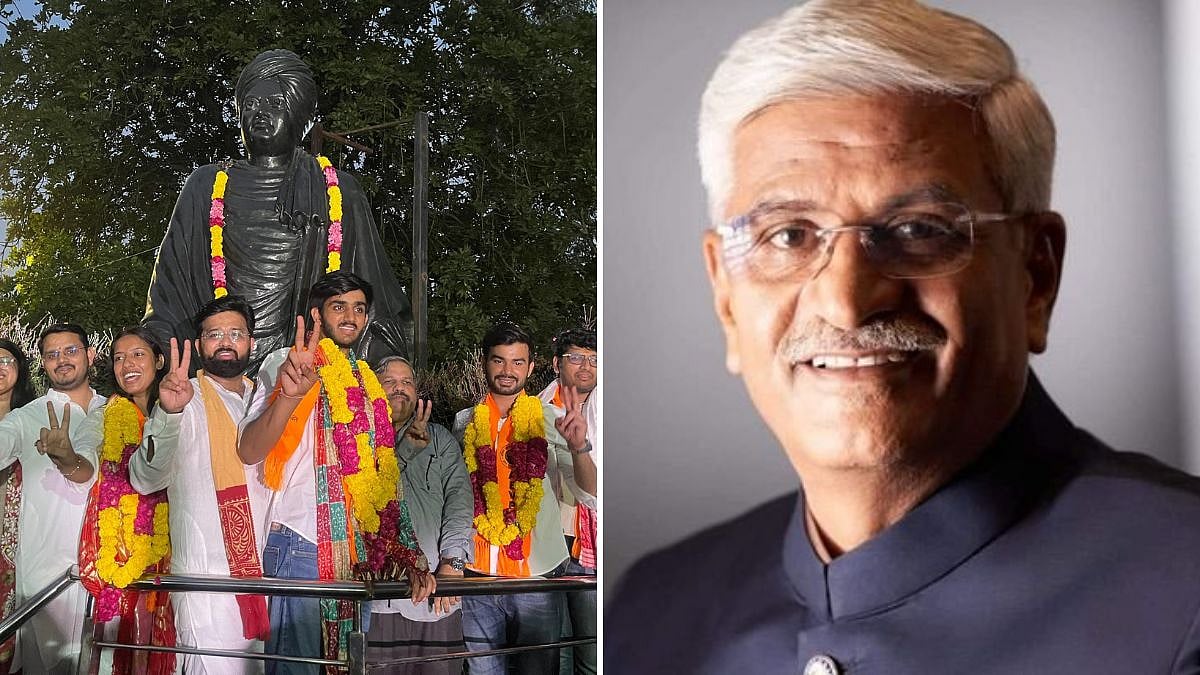The harvest of major Rabi season crops is just a few weeks away. It is time to assess the prospects of major Rabi crops such as wheat, pulses, oilseeds and coarse cereals. The emerging picture is looking far from pretty, characterised by the decline in planted area and the impact of unfriendly weather.
Earlier, the southwest monsoon extended beyond September 2024 across many parts of the country. It left good soil moisture and created ideal conditions for sowing of Rabi crops. However, winter rains in December and January were inadequate.
In February, temperatures have risen gradually. In the first half of this month, large parts of the country, especially the eastern and central regions, faced moisture stress. Rainfall data from the India Meteorological Department (IMD) clearly shows dry conditions.
More importantly, as compared with the 2024 Rabi, the acreage for wheat, pulses and oilseeds has actually declined this season, that is, Rabi 2025. The last planted area report from the Union Ministry of Agriculture was on February 4. There has been no update since then.
Wheat: As the most important Rabi crop, wheat is critical for the country’s food security. In Rabi 2024, the final area was 34.2 million hectares as per government data. It has shrunk to 32.5 million ha this season. A reduction of 1.7 million ha readily translates to a loss of 5.1 million tonnes of wheat, assuming an average yield of 3 t/ha.
Indian wheat is known to be at the limit of heat tolerance. As day temperatures rise, the crop becomes vulnerable. The government has set a production target of 115 million t. Last year, the government estimated the wheat crop at 111.3 million t, which is widely believed to be overestimated by 10 percent.
This season, two scenarios emerge for wheat. Under normal weather conditions, the wheat harvest may be in the 102-104 million t range. If temperatures rise, as happened in the last two years, there is a risk that production may decline to 95-98 million t.
In such an event, wheat supply-demand fundamentals will tighten even further. Wheat prices are already rather high, well above the procurement price. So growers will be tempted to sell in the open market rather than to the Food Corporation of India. The FCI has set a procurement target of 30 million t. On current reckoning, the target appears to be rather ambitious and is unlikely to be achieved.
Pulses: There has been a steady decline in planted area for three years in a row. Vis-à-vis 16 million ha in Rabi 2024, this year the planted area is reduced to 14.1 million ha. Chana, or chickpea, is the country’s largest pulse crop. The planted area for chana has fallen to approximately 9.9 million ha this time, down from 10.5 million ha of last year.
The production target for chana is set at an unrealistic 13.65 million t. Last year, the government initially estimated the harvest size at 13.5 million t, but over time, reduced it to a more realistic 11.0 million t after independent observers like this writer questioned the initial estimate.
Looking at the area and precipitation this year (moisture stress), chana output may range between 10.0 and 10.5 million t. Following liberal imports, large stocks of imported chickpeas and yellow pea are available in the country.
The planted area for masur or lentil is also down this year to 1.7 million ha from 2.0 million ha last year. The masur harvest is estimated at 1.7 to 1.8 million t, virtually unchanged from last year.
Field pea area is down 20 percent from last year’s one million hectares.
Oilseeds: The planted area has declined from 11.1 million ha last year to 9.7 million ha this year. Rapeseed-mustard is the most important oilseed crop in the Rabi season. Its planted area is 8.9 million ha, down from 10.0 million ha last year. The rapeseed-mustard production target is set at 13.8 million t, but the harvest size may be substantially down to 10.0 to 10.5 million t due to moisture stress.
Maize: Among coarse grains, maize is important because of its multiple uses as feed, for starch and for ethanol. In the Rabi season, Bihar’s contribution is usually commendable, but this year the state has faced acute moisture stress. As compared with last year’s production estimate of 12 million t and this year’s similar production target of 12 million t, the actual harvest size may fall below 10 million t.
In conclusion, for policymakers, the emerging scenario is likely to pose a challenge. Clearly, climate change is taking a toll. As a tropical nation, India is more vulnerable to the adverse consequences of global warming and climate change.
It is time to invest heavily in climate-resilient farming. Infusion of multiple technologies in agriculture is the way forward.
G. Chandrashekhar is an economist, senior journalist and policy commentator, specialising in global agribusiness and commodity markets. He is an independent director on corporate boards and serves as an independent member of SEBI – CDAC. Views are personal.











